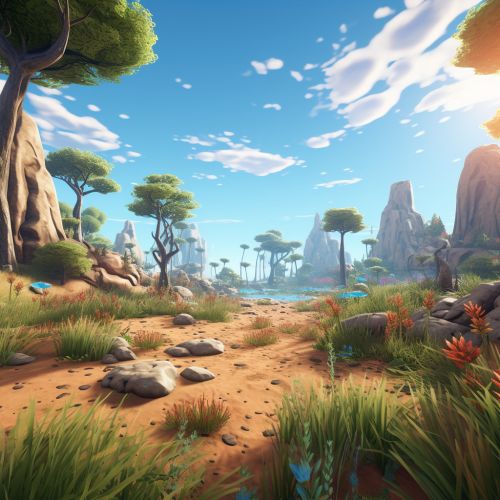Biomes
Introduction
Biomes are distinct biological communities that have formed in response to a shared physical climate. They are characterized by similar vegetation structures, such as grasslands, forests, and deserts, and are associated with specific types of climatic conditions. Biomes are distinct from habitats, which are smaller areas where specific environmental conditions have resulted in a certain set of living conditions.
Classification of Biomes
Biomes are commonly identified by the types of species that live within them and by their climate. There are many different ways to classify biomes, which can lead to confusion. However, the most common classification systems include terrestrial and aquatic biomes.
Terrestrial Biomes
Terrestrial biomes, also known as land biomes, are those that occur on dry land. These biomes are typically defined by the dominant type of vegetation, such as trees in a forest or grasses in a grassland. Terrestrial biomes include:
- Tropical rainforests: These are characterized by high rainfall and warm temperatures throughout the year. They are the most biodiverse biome, containing up to half of all species on Earth.
- Savannas: These are grasslands with scattered trees, and they are found close to the equator. They have a wet and dry season.
- Deserts: These are areas with very low rainfall, typically less than 50 cm per year. They can be hot or cold.
- Temperate forests: These are found in temperate zones and have moderate rainfall and four seasons.
- Taiga or boreal forests: These are found in colder climates with short summers and long, cold winters. They are dominated by coniferous trees.
- Tundra: This is the coldest of all the biomes, found in the Arctic and high mountain tops. The soil is permanently frozen, or permafrost.


Aquatic Biomes
Aquatic biomes, also known as water biomes, are those that occur in water. These biomes are typically defined by their salinity, depth, and the types of species that live within them. Aquatic biomes include:
- Marine biomes: These include oceans, coral reefs, and estuaries. They have a high salt content and are the largest biome in the world.
- Freshwater biomes: These include lakes, rivers, streams, and wetlands. They have a low salt content.
Factors Influencing Biomes
Several abiotic and biotic factors influence the characteristics and distribution of biomes.
Abiotic Factors
Abiotic factors are the non-living parts of an environment that can often have a major influence on living organisms. Such factors include climate, soil, and topography.
- Climate: This is the most significant factor that determines the type of biome that exists in a particular area. It includes elements such as temperature, humidity, and precipitation.
- Soil: The type of soil in an area can determine what type of vegetation can grow there, which in turn defines the biome.
- Topography: The physical features of the land, such as mountains, valleys, and plains, can influence the climate and thus the biome.
Biotic Factors
Biotic factors are the living parts of an environment, such as the organisms themselves and their relationships with other organisms.
- Plants: The types of plants that can grow in an area are largely determined by the climate and soil. These plants then provide food and habitat for other organisms.
- Animals: The types of animals in a biome are determined by the type of plants and the climate. They can also influence the type of plants through their interactions, such as grazing.
- Microorganisms: These play a crucial role in nutrient cycling and decomposition, which can influence the types of plants and animals in a biome.
Human Impact on Biomes
Human activities have had a significant impact on biomes worldwide. This impact has often resulted in the degradation and destruction of biomes, leading to loss of biodiversity, changes in climate patterns, and other environmental problems.
- Deforestation: This is the removal of large areas of forest for timber or to make way for agriculture. It has led to the loss of many forest biomes, particularly tropical rainforests.
- Urbanization: This is the development of land for residential, commercial, or industrial use. It often results in the loss of natural biomes and the creation of a new type of biome, the urban biome.
- Climate Change: This is causing shifts in temperature and precipitation patterns, which can result in changes to the distribution and characteristics of biomes.
Conservation of Biomes
Conservation efforts are crucial to preserve biomes and their biodiversity. These efforts can take many forms, including the establishment of protected areas, restoration projects, and legislation to protect endangered species and habitats.
- Protected Areas: These are areas of land or water that are protected by law from certain types of development or use. They can help to preserve the natural characteristics of a biome and protect its biodiversity.
- Restoration Projects: These are efforts to restore degraded biomes to their natural state. They often involve activities such as reforestation and the reintroduction of native species.
- Legislation: Laws and regulations can protect biomes by regulating activities such as hunting, fishing, logging, and development.
